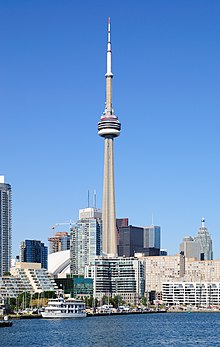Toronto is the largest city in Canada and the provincial capital of Ontario. It is located in Southern Ontario on the northwestern shore of Lake Ontario. The history of Toronto began in the late 18th century when the British Crown purchased its land from the Mississaugas of the New Credit. The British established a settlement there, called the Town of York, which its lieutenant governor, John Graves Simcoe, designated as the capital of Upper Canada. The city was ransacked in the Battle of York during the War of 1812. In 1834, York was incorporated as a city and renamed Toronto. It was damaged in two huge fires, in 1849 and 1904. Over the years, Toronto has several times expanded its borders through amalgamation with surrounding municipalities, most recently in 1998...
Toronto has a humid continental climate, with warm, humid summers and cold winters. The city experiences four distinct seasons, with considerable variance in day to day temperature, particularly during the colder weather season. Owing to urbanization and its proximity to water, Toronto has a fairly low diurnal temperature range (day-night temperature difference). The denser urban scape makes for warmer nights year around and is not as cold throughout the winter than surrounding areas (particularly north of the city); however, it can be noticeably cooler on many spring and early summer afternoons under the influence of a lake breeze.
Following the Second World War, refugees from war-torn Europe and Chinese job-seekers arrived, as well as construction labourers, particularly from Italy and Portugal. Following the elimination of racially based immigration policies by the late 1960s, immigration began from all parts of the world. Toronto's population grew to more than one million in 1951 when large-scale suburbanization began, and doubled to two million by 1971. By the 1980s, Toronto had surpassed Montreal as Canada's most populous city and the chief economic hub. Click to Read more

More Travel by Video:
- Travel by Video - Venice - Italy
- Hạ Long bay - Vietnam
- Phong Nha - Kẻ Bàng - Vietnam
- Tam Cốc - Bích Động - Vietnam
- Edmonton - Canada
- Calgary - Canada
- The Calgary Stampede - Canada
- Vancouver - Canada
- Toronto - Canada
- Montreal - Canada
- Quebec City - Canada
- Jasper National Park - Canada
- Banff National Park - Canada
- Niagara Falls - Canada
- The Bay Of Fundy - Canada




